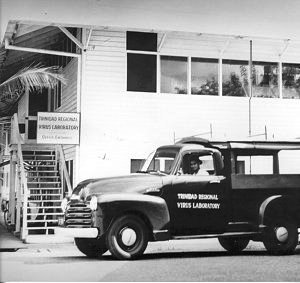
The North Region of Brazil is the largest region of Brazil, corresponding to 45.27% of the national territory. It is the second-least-inhabited of the country, and contributes with a minor percentage in the national GDP and population. The area of the region is slighty larger than India or the whole European Union. It comprises the states of Acre, Amapá, Amazonas, Pará, Rondônia, Roraima, and Tocantins.

Oropouche fever is a tropical viral infection transmitted by biting midges and mosquitoes from the blood of sloths to humans. This disease is named after the region where it was first discovered and isolated at the Trinidad Regional Virus Laboratory in 1955 by the Oropouche River in Trinidad and Tobago. Oropouche fever is caused by a specific arbovirus, the Oropouche virus (OROV), of the Bunyaviridae family.

Pouteria is a genus of flowering trees in the gutta-percha family, Sapotaceae. The genus is widespread throughout the tropical Americas, with outlier species in Cameroon and Malesia. It includes the canistel, the mamey sapote, and the lucuma. Commonly, this genus is known as pouteria trees, or in some cases, eggfruits.
Regional Electoral Court is the judicial body that is in charge of elections at the state level in Brazil. There are 27 TREs, one for each Brazilian state, plus one for the Federal District.

The Trinidad Regional Virus Laboratory (T.R.V.L.) was established in Port of Spain, in 1953 by the Rockefeller Foundation in co-operation with the Government of Trinidad and Tobago. It was originally housed in an old wooden army barracks near the docks in Port of Spain. A large wired-in "animal house" was built out back to house the many wild animals brought in for study.
This gallery of coats of arms of Brazilian regions shows the coats of the 26 Brazilian States and the Federal District.
Haemagogus is a genus of mosquitoes in the dipteran family Culicidae. They mainly occur in Central America and northern South America, although some species inhabit forested areas of Brazil, and range as far as northern Argentina. In the Rio Grande Do Sul area of Brazil, one species, H. leucocelaenus, has been found carrying yellow fever virus. Several species have a distinct metallic sheen.

Olyra is a genus of tropical bamboos in the grass family. It is native primarily to the Western Hemisphere, with one species extending into Africa.
Mayaro virus disease is a mosquito-borne zoonotic pathogen endemic to certain humid forests of tropical South America. Infection with Mayaro virus causes an acute, self-limited dengue-like illness of 3–5 days' duration. The causative virus, abbreviated MAYV, is in the family Togaviridae, and genus Alphavirus. It is closely related to other alphaviruses that produce a dengue-like illness accompanied by long-lasting arthralgia. It is only known to circulate in tropical South America.

Events from the year 2008 in Brazil.

Events from the year 2004 in Brazil.

Events in the year 2005 in Brazil.

Events in the year 2009 in Brazil.

Events in the year 2003 in Brazil.
Maguari orthobunyavirus, abbreviated MAGV, is a negative-sense, single-stranded RNA virus in the Bunyavirales order, genus Orthobunyavirus, Bunyamwera serogroup, that has been shown to be capable of causing human disease. MAGV is related to Cache Valley virus and Tensaw virus.
The 1998 Copa Norte was the second edition of a football competition held in Brazil. Featuring 8 clubs, Acre, Amapá, Amazonas, Maranhão, Pará, Piauí, Rondônia and Roraima with one vacancy.
The Miss Brazil World 1996 pageant took place on October 11, 1996. Each state and the Federal District competed for the title of the Brazilian Crown for Miss World. The winner entered Miss World 1996. Anuska Prado of Espírito Santo ended being the winner at the end of the contest.
The 2000 Copa Norte was the fourth edition of a football competition held in Brazil. Featuring 11 clubs, Pará have four vacancies; Acre, Amapá, Amazonas, Maranhão, Piauí, Rondônia and Roraima with one each.

Miss Brazil 2009 was the 55th edition of the Miss Brazil pageant. It was held on 9 May 2009 at the Latin American Memorial Complex in São Paulo, São Paulo State, Brazil and was hosted by Nayla Micherif and Renata Fan. Natálya Anderle of Rio Grande do Sul crowned her successor Larissa Costa of Rio Grande do Norte at the end of the event. Costa represented Brazil at the Miss Universe 2009 pageant. 1st Runner-Up, Rayanne Morais of Minas Gerais represented the country at Miss International 2009.






